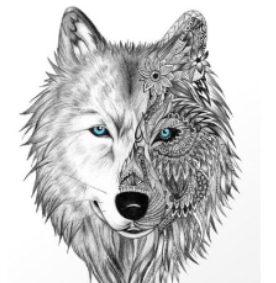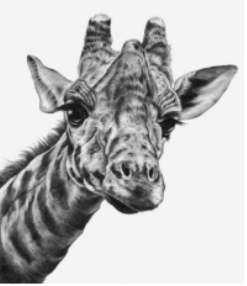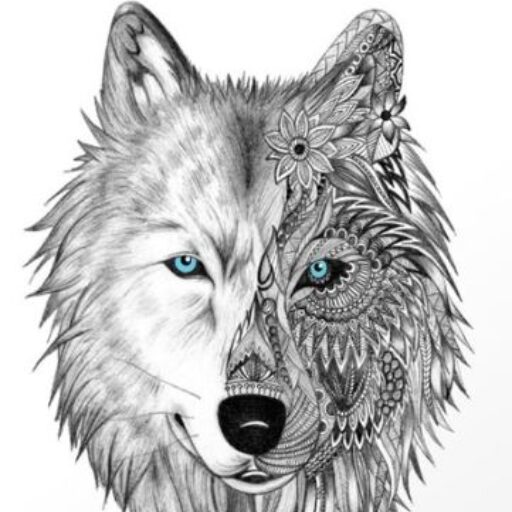Greetings everybody! On this site you I share materials to support a more compassionate way of living. As a communication trainer I feel inspired by the teachings of Thich Nhat Hanh, Marshall Rosenberg and Robert Gonzales and try to integrate them in my own life and communication courses.
Marshall Rosenberg is honored and loved by many for his research on and teaching of Nonviolent Communication. Some time during the 1980s he came to appreciate the jackal as an excellent metaphor for a person, who communicates in a violent way.

The nonviolent communication approach to communication was at first represented by the duck, as Marshall connected the duck to an attitude of joyful giving.

But the duck looked vulnerable as a partner for the jackal.
So Marshall kept looking for an animal partner and finally found the giraffe. How Marshall Rosenberg came to use the giraffe and the jackal in his workshops and teaching.

Marshall Rosenberg in essence revealed the empowering or disempowering effect of language and how we can become aware of our choice around taking a jackal or a giraffe perspective on things.
And with power he refered to our true power, our spiritual power as living human beings – not the power of politics, wealth, good looks or skills. The power to make life more wonderful, even in the darkest situations that life can offer to us.

Thich Nhat Hanh is famous and loved for the establishment of the Plum Village tradition of buddhism and the world-wide community around the Plum Village monasteries. In this tradition of buddhism the art of Mindful Communication is practiced as loving speech and listening deeply or as speaking and listening from and with the heart. Each person is intending to communicate from a place of awareness about their inner energy and about their emotions. When difficult emotions arise, we try to embrace these emotions and take care of them, rather than following our impulses in acting out these emotions. So stoping and embracing anger, for example, rather than speaking out of anger.

Robert Gonzales combines the major elements of nonviolent communication, but supported the full embodiment of the compassionate experience, the buddhist focus on the experience in the body. He added dyad meditation on the beauty of needs as a spiritual practice of awakening, very concrete and doable and efficient in the field of mutual presence. He called his approach Living Compassion – it supports us in the unfolding of our true inner nature, our innocence. And that innocence has certain basic qualities at its core, such as freedom, spaciousness and compassion.
A person quite close to the approach of Robert was Stephen R. Schwartz, who died at the age of 43, far too early. His books are out of print at this moment and information on his work is not so easy to get by. I collected some of what I found on a page dedicated to honor his work.
I like the term Compassionate Communication to represent a way of communication that integrates the elements from these three practitioners. I very much like the simplicity of the metaphors jackal and giraffe and within the title of my website you find my understanding of friendship as one of the highest spiritual values in life. A true siblinghood based on friendship in difference and understanding could be the most inspiring goal in life.
The Language of Giraffe, The Language of Jackal
In short: the giraffe represents compassionate, nonviolent communication, the jackal represents passionate, violent communication – or – we speak the language of Giraffe, the language of Jackal.
While the giraffe represents a natural way of communicating about our needs and values, we have been educated from childhood to think, speak and hear in a violent, jackal way. But there are natural giraffes, which may influence our life in a deep way. A moment that a person touched our heart in one way or another may give us a giraffe orientation for our whole life. This fact in itself, if I let it sink in, says a lot to me about the immense power we all have to make life wonderful for each other.
In our giraffe moments we are able to be aware and care about our human interdependency. We are aware that we are always free how we relate to any of our experiences in life. We can enjoy that others fulfill their needs, even as we mourn the frustration of our unfulfilled needs in a given situation at a certain time. We can transform jackal communications into wonderful requests, and we can demonstrate this capacity even in the most intense and challenging relationships moments.
In our jackal moments, all of this is not available. We act from a sense of being right and we feel actually connected to a deep sense of authenticity about that. We see others as obstacles or enemies, and we are engaged in a fight who gets the cake. There is a fundamental blindness in these moments, a need for support as we engage with the world in ignorance and delusion.
Violence and Nonviolence – Are Those Not Judgments?
Chances are that you feel a bit tense or irrititated, when you think that you communicate violently or when someone lets you know that you communicate violently.
In our habitual jackal mode of hearing it is wrong to be violent or to act in a violent way. And when you think you act in a wrong way, then you might fear that you will face consequences – punishment.
Nonviolent is good, violent is bad. Violence is definitely wrong! I guess we feel some truth in that.
This may have been a reason why Marshall Rosenberg was not so happy with the expression “nonviolent communication”, as one could hear a judgment at its core – which never was his intention. Moreover it was a “negative” term, naming what this way of communicating is not, rather than what it is.
When he established the center of nonviolent communication CNVC in 1983 on a shoe-string budget, there was also the closeness in spirit to Gandhian and Kingian nonviolence, as the Civil Rights movement had evolved in the USA in the 1960s. Marshall and his friend Al Chappelle had been very active in promoting more understanding between blacks and whites in communities. To learn to see each other’s humanity is possible and wonderful when it occurs. Voluntary social change.
So there were and there still are many aspects we can consider around these terms and each person may approach this in their own way and make their own decision, what serves them best.
Compassionate vs. Passionate Communication
I have come to contrast compassionate giraffe communication with passionate jackal communication.
As giraffes we can translate “violent behaviour” into “the person acts from their own needs, without awareness and care for impact and consequences.” With other words, there is a fundamental blindness and we all have a need for people to be able to both see and care about consequences. It might be very fearful to experience a person acting without awareness for consequences.
We need to be able to know about this fear in us and to be able to take care of such a fear, if we want to be able to not react with similar blindness to the person acting with blindness. As such we need to be able to befriend our own jackals – in particular jackals around the fear of death, the fear of survival. And that includes physical and spiritual survival – shame and the need for dignity constitute a particularly challenging moment of our inner world. And before we can befriend those jackals, we need to actually become aware of our jackals.
So, a lot in these pages is to showcase jackal thinking and language – as encountered by me inside myself or in the media and in my daily life – and to propose giraffe translations. When I translate I take my own body response as a guide. Your body may or may not react to this – jackals are always open to harbor a host of different needs.
In essense I think we need to understand better, that there are no jackals. But such an understanding cannot be an intellectual understanding, it needs to be an embodied wisdom. We need to be able to get speed-giraffe-ears and for that we need to be able to embrace our anger, despair, fear, sadness and even joyful feelings with all of our heart. This is a a path.
In honesty we need to look at uncomfortable places, stretch our zone of comfort as we can and as we are willing, little by little, taking steps into the unknown, but very alive. And how can that not be fun?

| It is black and white, my dear. | Do nothing that isn’t play. |
|---|---|
 |  |
Jackal – Passionate Communication | Giraffe – Compassionate Communication |
Compassionate or Passionate Social change?
In brief – does the world need fixing or is it perfect and a paradise already?
When I put myself in the place of the judge of that, am I humble or over-stretching and blaming someone, something …?
As I see it Marshall realized that the aim of creating a better world, fighting injustice can be a self-defeating one, especially when one get obsessed with the “wrongness” of the world and lacks the capacity to mourn one’s own unfulfilled needs in that perception.
Early on in his career he faced his own limitations with regard to that. He got very angry with people he saw as racists or war mongers for example. And then he communicated in Jackal with them.
It is simple, but not easy.
So he went on to do something he was very good at, doing communication workshops and promoting his method of communication, trusting that this would make life more wonderful for more and more people and that those people might make changes in their lives gradually, as far as their reach would go.
Bring social change, as long as you can do it with a sense of play, as long as you are open for a No from the powerful injust and cruel people you may want to talk to and who you may want to ask for a change in their behavior.
Try to make a dictator see how they would benefit more from letting go of power than from increasing their control on power. And do it as a request, truly open to outcome, with the clear intent to only agree to voluntary social change.
In his workshop on social change Marshall proposed that people imagine they get 30 minutes to talk to a person in power, in an area of life that they personally feel passionate about and want to bring change to. This dialogue could be prepared with help from a team. Then a roleplay would be used to enhance the ability to make connection and to bring awareness to possible road-blocks or difficulties.
Bring social change – not from confrontation, but from connection and mutual willingness.
Compassionate social change needs both freedom and awareness of all sides of a conflict.
In these days and times I see so much suffering – in people who suffer from injustice, but also in people who try to change the state of affairs with blindness-generating passion.
Peace in me, peace in the world.
Let go. Trust in life.
John Gather, 2024
